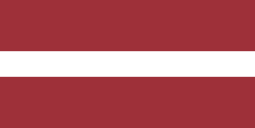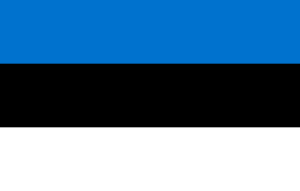Standing NATO Mine Countermeasures Group 1
Standing NATO Mine Countermeasures Group 1 (SNMCMG1) is a North Atlantic Treaty Organisation (NATO) standing mine countermeasures immediate reaction force.
Tasks and mission
There are a lot of hazards on the bottom of the seas. Most of them have been delivered by man during times of war and local conflicts. It is estimated that during the First and the Second World War about 200,000 sea mines, torpedoes and bombs have been placed in northern European seas. Most of those devices reside in the Baltic, the Straits and the North Sea and still pose a serious threat.
The accident which happened in 2005 shows just how destructive mines can still be. The dormant mine lying on the sea bed for several decades turned deadly when caught in a net and hoisted aboard. Three Dutch fishermen were killed in the accident and many others injured.
In the 21st century there are other threats. Modern sea mines are both effective and relatively cheap, therefore are likely to fall into the terrorist's hands and to be used to wreak havoc across European ports. Since most of the basic commodities are being shipped to Europe by sea, one needs to remember that even a small number of mines laid in strategic points (harbor, straits, etc.) can cause large scale disruption and possibly disturb the flow of goods to the European countries.
The main mission of Standing NATO Mine Countermeasure Group 1 is: "To provide NATO with continuous MCM capability for NRF and non-NRF operations and other activities in peacetime and periods of crisis and conflict".
Ship's equipment and abilities, as well as sailors experience, enable SNMCMG1 to undertake a wide variety of tasks. The Group is capable of supporting anti-terrorist operations and is ready to assist in the prevention of crisis situations and conflicts at seas. Units within the group are also able to assist in Search and Rescue (SAR) Operations and non combat evacuation operations, during which civilians are evacuated from threatened areas. These tasks clearly demonstrate that NATO in the form of SNMCMG1 and all NATO nations are determined to keep worldwide peace and safety at sea.
Current ships
As of Aguust 11th 2017, SNMCMG1 consists of:[1]
 (Flagship) Vidar-class minesweeper, LVNS Virsaitis (A53)
(Flagship) Vidar-class minesweeper, LVNS Virsaitis (A53)-
 Sandown-class minehunter, EML Sakala (M314)
Sandown-class minehunter, EML Sakala (M314)
History
SNMCMG1 is the oldest of four NATO groups operating in the international arena. It was formed in the Belgian port of Ostend May 11, 1973 as Standing Naval Force Channel (STANAVFORCHAN) and was under direct command of NATO's Allied Command Channel (ACCHAN). The purpose of the appointment of the standing squadron was primarily to ensure the safety of navigation and approaches to ports in the English Channel and in Belgium and the Netherlands. In the event of a conflict with the Warsaw Pact the squadron would have operated in the North Sea and Channel. Originally the squadron consisted of mine countermeasure ships of the Belgian Naval Force, German Navy, Royal Navy and Royal Netherlands Navy. Two more countries (Denmark and Norway) joined the squadron in year 2000. Subsequently the operating area of the squadron was significantly expanded, and the name changed into Mine Countermeasures Force Northern Europe.
Defining new threats and increasing the spectrum of tasks led the team to becoming a global-scale group, which could operate in almost every corner of the world. Changes in the nature of the Group and the subsequent change of name to NATO Response Force MCM Force Northern Europe were approved at the NATO summit in Prague in 2002. In the same year the group was joined by the ships from new members of NATO: Estonia, Latvia, Lithuania and Poland. The first Polish ship operating within the Group was the minehunter ORP "Mewa" (October 2002).
The team changed its name two times since. In January 2005 that was: Standing NRF Mine Countermeasures Group One, and exactly one year later: Standing NATO Mine Countermeasures Group One, which is the name used nowadays. In view of the fact that the Group consists of ships of different flags, its command is rotating annually.
There are four NATO standing maritime naval Groups. Two of them - SNMG1 and 2 (Standing NATO Maritime Group One and Group Two) bring together a large surface vessels like destroyers and frigates. Two other - SNMCMG1 and 2, are composed of minehunters and minesweepers. Groups designated as "One" operate on the waters of northern Europe, and those named "Two" operate in southern Europe. The changing geopolitical situation, and thus the emergence of new challenges and threats means that all teams are now able and prepared to operate on all the oceans, in almost every corner of the world, whenever there is need to use them.
Commanders
| Rank | Name | Last name | Assumed command | Finished | Country |
|---|---|---|---|---|---|
| cdr | F. | van Begin | 1973.05 | 1974.11 | Belgium |
| cdr | P. | McCaren | 1974.11 | 1976.06 | Royal Navy |
| cdr | P.C. | Bakker | 1976.06 | 1977.11 | The Netherlands |
| cdr | P | Marin | 1977.11 | 1979.05 | Belgium |
| cdr | H.A.N. | Willis | 1979.05 | 1980.11 | Royal Navy |
| cdr | W.F. | Harberts | 1980.11 | 1982.05 | The Netherlands |
| cdr | F. | Jacobi | 1982.05 | 1983.05 | Germany |
| cdr | G. | Busard | 1983.05 | 1984.05 | Belgium |
| cdr | R.C. | Moore | 1984.05 | 1985.05 | Royal Navy |
| cdr | D.B. | Sluyter | 1985.05 | 1986.05 | The Netherlands |
| cdr | H.-J. | Gennert | 1986.05 | 1987.05 | Germany |
| cdr | R.E. | Cuypers | 1987.05 | 1988.05 | Belgium |
| cdr | P.J. | Gale | 1988.05 | 1989.05 | Royal Navy |
| cdr | A.L. | Maas | 1989.05 | 1990.05 | The Netherlands |
| cdr | D. | Shreck | 1990.05 | 1991.05 | Germany |
| cdr | S.G.G. | Saille | 1991.05 | 1992.05 | Belgium |
| cdr | T.I. | Hildesley | 1992.05 | 1993.06 | Royal Navy |
| cdr | T. | De La Court | 1993.06 | 1994.06 | The Netherlands |
| cdr | N. | Walz | 1994.06 | 1995.05 | |
| cdr | Gilbert | Legein | 1995.05 | 1996.05 | Belgium |
| cdr | Colin | Welborn | 1996.05 | 1997.05 | Royal Navy |
| cdr | P.F. | Hansen | 1997.05 | 1998.05 | Denmark |
| cdr | G. | Flage | 1998.05 | 1999.05 | Norway |
| cdr | J.D.R. | Kleywegt | 1999.05 | 2000.05 | The Netherlands |
| cdr | H. Georg | Buss | 2000.05 | 2001.05 | Germany |
| cdr | John | Saussez | 2001.05 | 2002.05 | Belgium |
| cdr | Adrian P. | Cassar | 2002.05 | 2003.05 | Royal Navy |
| cdr | Michael | Flagstad | 2003.05 | 2004.05 | Denmark |
| cdr | Per | Kartvedt | 2004.05 | 2005.05 | Norway |
| cdr | Nico | Vasseur | 2005.05 | 2006.03 | The Netherlands |
| cdr | Andreas | Stricker | 2006.03 | 2007.01 | Germany |
| cdr | Serge | Ots | 2007.01 | 2008.01 | Belgium |
| cdr | Chris | Davies | 2008.01 | 2009.01 | Royal Navy |
| cdr | Henrik Holck | Rasmussen | 2009.01 | 2010.01 | Denmark |
| cdr | Krzysztof Jan | Rybak | 2010.01 | 2011.02 | Poland |
| cdr | Herman | Lammers | 2011.02 | 2011.07 | The Netherlands |
| cdr | Guy | Terryn | 2011.07 | 2012.01 | Belgium |
| cdr | Erik | Hansen | 2012.01 | 2012.08 | Norway |
| cdr | Yvo | Jaenen | 2012.08 | 2013.01 | Belgium |
| cdr | Piotr | Sikora | 2013.01 | Poland | |
| cdr | Eirik | Otterbu | 2014.04 | 2014.05 | Norway |
| cdr | Gunther | Brassel | 2014.05 | 2014.08 | Germany |
| cdr | Giedrius | Premeneckas | 2014.08 | 2015.01 | Lithuania |
| cdr | Peter | Bergen Henegouwen | 2015.01 | 2016.01 | The Netherlands |
| cdr | Martin | Schwarz | 2016.01 | 2016.06 | Germany |
| cdr | Johan-Elias | Seljamaa | 2016.06 | 2017.06 | Estonia |
| cdr | Gvido | Laudups | 2017.06 | Latvia |
See also
- Standing NATO Mine Countermeasures Group 2
- Standing NATO Maritime Group 1
- Standing NATO Maritime Group 2
